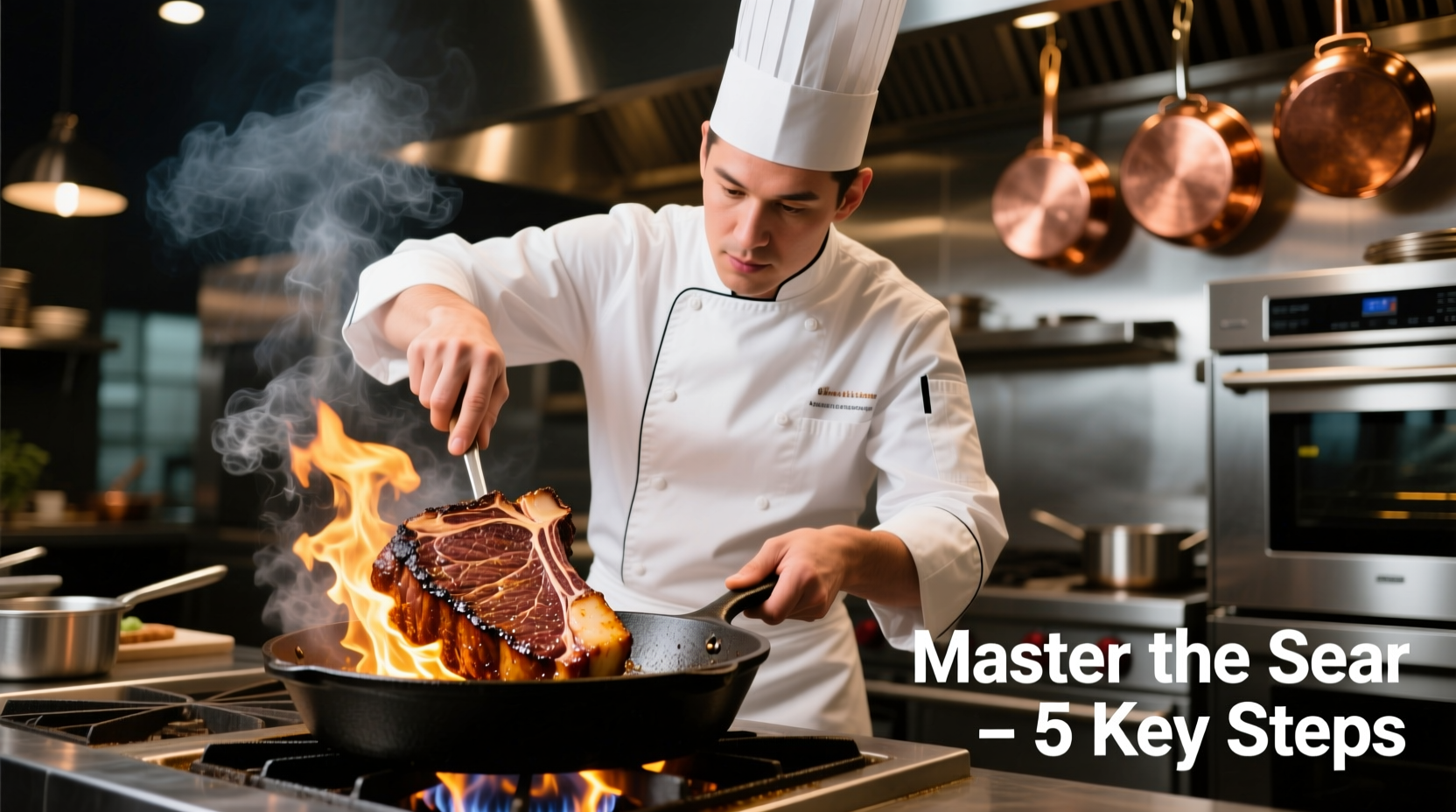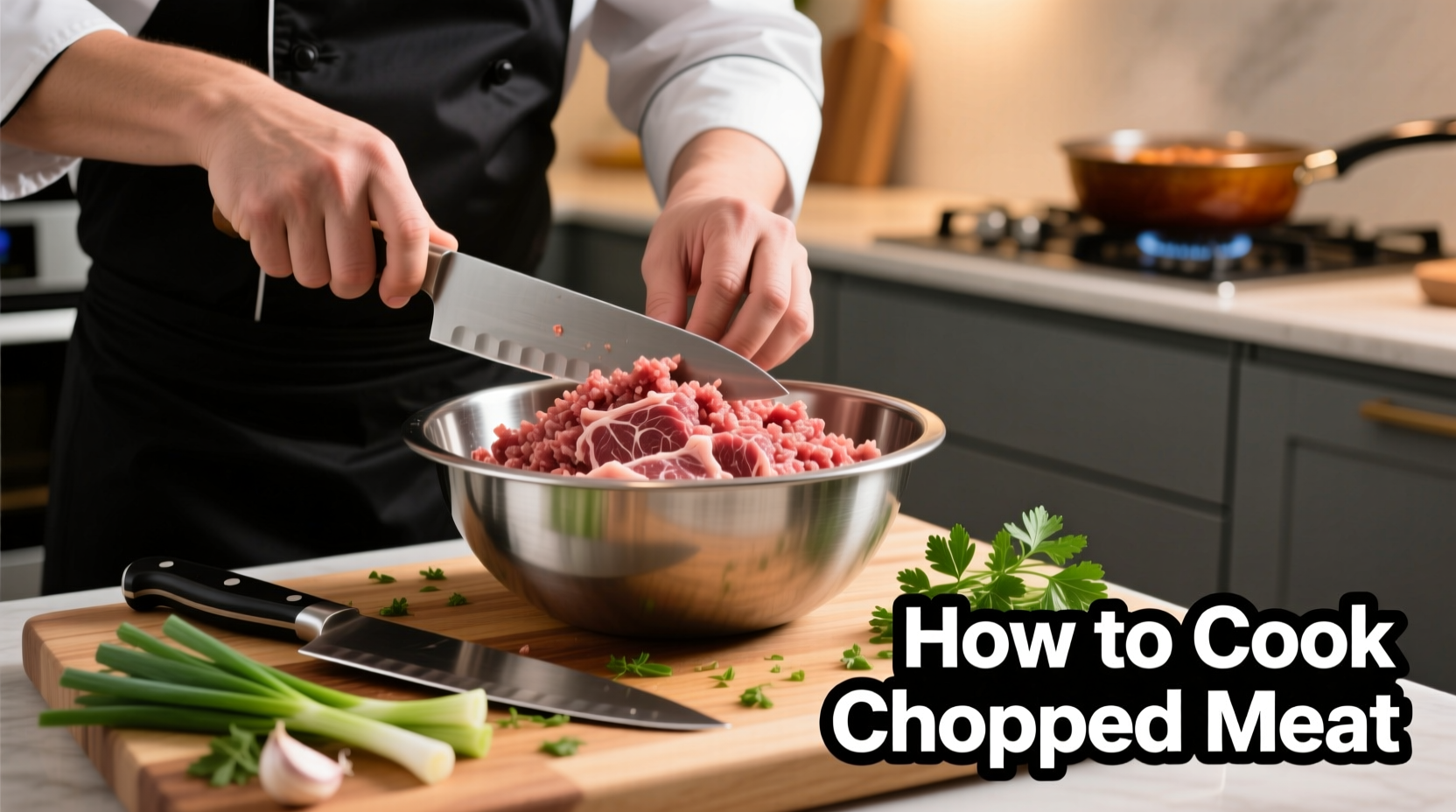Perfectly cooked chopped meat requires proper temperature control (160°F/71°C internal temperature), careful seasoning, and the right cooking technique to avoid dryness while ensuring food safety. This guide delivers professional chef methods for consistently juicy, flavorful results every time.
Chopped meat is a kitchen staple that appears in everything from tacos to meatloaf, but many home cooks struggle with dry, flavorless results. As a professional chef with years of experience teaching home cooks, I've seen the same mistakes repeat: overhandling the meat, incorrect heat levels, and improper seasoning timing. The good news? Mastering chopped meat takes just a few key techniques that transform this humble ingredient into restaurant-quality dishes.
Understanding Your Chopped Meat: Types and Selection
Not all chopped meat is created equal. The fat content dramatically affects cooking outcomes:
| Meat Type | Fat Ratio | Best Cooking Methods | Flavor Profile |
|---|---|---|---|
| Beef (standard) | 80/20 | Pan-frying, grilling | Rich, robust |
| Beef (lean) | 90/10 | Baking, simmering in sauces | Milder, can dry easily |
| Pork | 75/25 | Slow cooking, stuffing | Sweet, fatty |
| Turkey/Chicken | 93/7 | Mixing with fats, moist cooking | Delicate, requires flavor boost |
According to the USDA Food Safety and Inspection Service, ground beef should contain no more than 30% fat by weight for safety and quality. When selecting meat, look for bright red color (indicating freshness) and avoid packages with excessive liquid, which suggests older product. For optimal flavor development, choose freshly ground meat over pre-packaged options when possible.
Essential Preparation Steps Before Cooking
Proper preparation makes the difference between mediocre and magnificent chopped meat dishes:
- Temperature matters: Remove meat from refrigerator 15-20 minutes before cooking. Cold meat seizes when hitting hot pans, preventing proper browning.
- Seasoning timing: Add salt 10 minutes before cooking to allow penetration without drawing out moisture prematurely.
- Handling technique: Use a light touch when mixing ingredients—overworking creates dense, tough results.
- Equipment selection: Cast iron or heavy-bottomed stainless steel pans provide the most consistent heat distribution for even cooking.
Professional chefs follow a specific sequence that home cooks often skip: chill formed patties or portions for 30 minutes before cooking. This simple step prevents meat from spreading uncontrollably in the pan and helps maintain shape during cooking.
Mastering Cooking Techniques for Perfect Results
Different dishes require different approaches. Here's how to execute each method properly:
Pan-Frying: The Most Versatile Method
- Preheat pan over medium-high heat for 3-5 minutes until properly hot
- Add just enough oil to coat the surface (1-2 teaspoons)
- Place meat in pan without overcrowding (work in batches if needed)
- Resist pressing down—this squeezes out precious juices
- Cook undisturbed for 3-4 minutes to develop crust
- Flip once and cook to 160°F internal temperature
The Maillard reaction—the chemical process creating that desirable brown crust—requires proper heat management. According to food science research from the American Meat Science Association, the ideal temperature range for this reaction is between 285-325°F. Too cool and you'll steam the meat; too hot and it burns before cooking through.
Baking: Hands-Off Consistency
Perfect for meatloaf, meatballs, or large batches:
- Preheat oven to 375°F (190°C)
- Use a wire rack over a baking sheet for air circulation
- Cook until internal temperature reaches 160°F (7-25 minutes depending on size)
- Rest for 5 minutes before serving to redistribute juices
Simmering: For Sauces and Stews
When incorporating into sauces like Bolognese:
- Brown meat thoroughly first for maximum flavor
- Add to sauce only after other ingredients have softened
- Simmer gently for 30-60 minutes to develop flavors
- Avoid vigorous boiling which makes meat tough

Flavor Enhancement Secrets from Professional Kitchens
Take your chopped meat from basic to extraordinary with these chef-tested techniques:
- Umami boosters: Add 1 tablespoon tomato paste per pound and cook until caramelized before adding liquids
- Texture variation: Mix in 1/4 cup breadcrumbs per pound for meatloaf to absorb juices without making it dense
- Temperature control: Remove meat from heat at 155°F—it will continue cooking to 160°F while resting
- Acid balance: Finish with a splash of vinegar or citrus juice to cut richness
Research shows that adding cold butter (1-2 tablespoons per pound) at the end of cooking creates an emulsified sauce that clings to meat particles, enhancing both texture and flavor perception. This restaurant technique works particularly well with pan sauces for chopped meat dishes.
Critical Food Safety Guidelines You Must Follow
Improper handling of ground meat causes thousands of foodborne illness cases annually. Follow these essential safety practices:
- Always cook to 160°F internal temperature (use a food thermometer—never guess)
- Never partially cook meat then refrigerate for later finishing
- Wash hands thoroughly after handling raw meat
- Clean all surfaces and utensils that contacted raw meat with hot, soapy water
- Refrigerate leftovers within 2 hours (1 hour if room temperature exceeds 90°F)
The USDA Food Safety and Inspection Service emphasizes that color alone cannot indicate doneness—pink meat can be safe, and brown meat can be undercooked. A reliable instant-read thermometer is the only accurate way to verify proper cooking. For reference, the critical temperature timeline shows:
- 140°F: Pathogens begin dying (but require sustained time)
- 150°F: Faster pathogen reduction
- 160°F: Instant safety for ground beef (no holding time needed)
Troubleshooting Common Chopped Meat Problems
Fix these frequent issues with professional solutions:
Dry, Crumbly Texture
Cause: Overcooking or insufficient fat content
Solution: Add 1-2 tablespoons of cold butter or olive oil per pound during cooking. For baked dishes, include a "panade" (mixture of breadcrumbs and milk) to retain moisture.
Meat Sticking to Pan
Cause: Inadequate preheating or too-cold meat
Solution: Ensure proper pan temperature before adding meat. Wait for the sizzle when meat hits the pan—this indicates proper heat level. Allow proper sear time before attempting to flip.
Uneven Cooking
Cause: Overcrowded pan or inconsistent portion sizes
Solution: Cook in batches with adequate space between portions. Use a kitchen scale to create uniformly sized portions for consistent cooking.
Delicious Recipe Applications to Try Tonight
Put your newfound skills to work with these simple applications:
Perfect Weeknight Taco Filling
Brown 1 pound chopped beef with 1 diced onion. Add 2 tablespoons taco seasoning, 1/2 cup broth, and simmer 5 minutes. Finish with fresh lime juice and cilantro.
Restaurant-Style Meatloaf
Mix 2 pounds chopped beef with 1/2 cup breadcrumbs, 1/4 cup ketchup, 1 egg, 1/2 cup finely diced vegetables, and seasonings. Form into loaf, bake at 375°F for 45-55 minutes until 160°F internal temperature. Top with glaze during last 15 minutes.
Asian-Inspired Stir-Fry
Quick-sear 1 pound chopped pork with 2 tablespoons soy sauce, 1 tablespoon sesame oil, and 1 teaspoon ginger. Add vegetables and finish with 1/4 cup broth for a glossy sauce.
Remember that chopped meat's versatility makes it perfect for adapting to your family's preferences. The key to success lies in understanding the fundamental techniques rather than memorizing specific recipes. With proper temperature control, thoughtful seasoning, and appropriate cooking methods, you'll consistently create juicy, flavorful dishes that impress.











 浙公网安备
33010002000092号
浙公网安备
33010002000092号 浙B2-20120091-4
浙B2-20120091-4